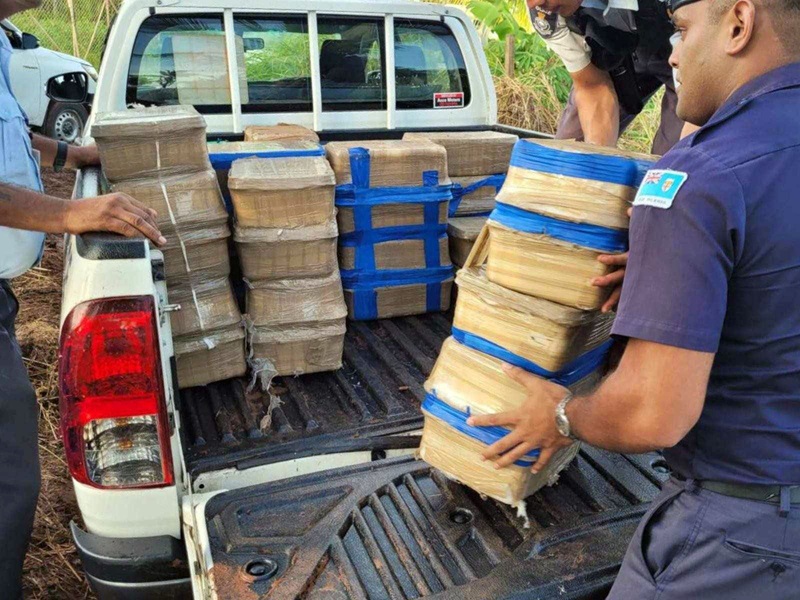Fiji’s alarming HIV surge — skyrocketing from under 100 new cases annually in 2010 to a staggering 1300 in 2024 — isn’t merely a public health emergency. It’s a grim symptom of a deeper national malaise, inextricably linked to the metastasizing drug epidemic and a fundamental failure of governance. As UNAIDS’ Eamonn Murphy starkly warns, this explosion is fuelled by “fast-growing injecting drug use … and the lack of continued focus.” This crisis demands more than medical Band-Aid; it demands confronting the intertwined plagues of addiction, systemic neglect, and eroded public trust that brought us here.
The deadly nexus: Drugs as the HIV accelerant
THE link is undeniable and terrifying. Fiji’s devastating methamphetamine crisis, extensively documented and previously discussed, has created a perfect storm for HIV transmission.
1. The injection gateway: Meth use often progresses to injection, driven by addiction and the pursuit of a more intense high. Sharing contaminated needles is a brutally efficient vector for HIV. The meth epidemic hasn’t just created addicts; it’s created a vast, vulnerable population for blood-borne viruses.
2. Risky behaviours: Meth use severely impairs judgment and increases libido, leading to unprotected sex and multiple partners — another primary transmission route Murphy highlights. The drug fuels environments where transactional sex flourishes, further amplifying risk.
3. The cartel shadow: The entrenched presence of international cartels working with local kingpins ensures a steady, pervasive flow of cheap, potent drugs. This isn’t just about crime, it’s about actively weaponising addiction and creating the conditions for disease proliferation. The state’s perceived inability, or unwillingness, to decisively dismantle these networks allows this toxic environment to persist.
Systemic failure: Neglect, underfunding, and broken trust
The HIV spike didn’t happen in a vacuum. It’s the consequence of years of systemic failure.
q Prevention abandoned: Murphy’s key point hits hard, prevention is chronically underfunded. While treatment is vital, stopping infections before they happen, is far more effective and economical. Fiji, like much of the region, ignored this, allowing prevention programs for key populations (sex workers, men who have sex with men, people who inject drugs, youth) to wither. This wasn’t an oversight, it was a catastrophic policy failure.
q The trust deficit: Mark Lal of Living Positive Fiji exposes the core human tragedy: people abandon treatment because they “don’t trust the system or understand the benefits”. This distrust isn’t born in a vacuum. It mirrors the pervasive cynicism documented in previous engagements – distrust in leaders, in institutions, in the police, in the justice system. When citizens believe the system is corrupt, indifferent, or incompetent, why would they trust its clinics or adhere to its lifelong medical regimens? Years of “political drama,” perceived self-serving leadership, and unfulfilled promises, have poisoned the well of public confidence, directly impacting health outcomes.
q Siloed response and neglected links: For too long the drug crisis and the HIV epidemic were treated as separate issues. The explosive growth of injecting drug use should have triggered an immediate, massive scaling up of harm reduction (needle exchange programs, opioid substitution therapy) and targeted HIV prevention for drug users. This integrated approach was neglected, allowing the epidemics to feed off each other.
The $10 million question: Too little, too late?
The government’s recent declaration of an HIV outbreak and commitment of $10 million is a necessary, but tragically belated, step. The critical questions remain:
1. Is it enough? Given the scale and momentum of the epidemic, fuelled by the drug crisis, $10 million may be insufficient without massive, sustained investment and robust regional support.
2. Where is it directed? Will the bulk go towards prevention – targeted interventions for key populations, comprehensive harm reduction for people who inject drugs, massive public education campaigns? Or will it primarily fund treatment, which, while vital, fails to stem the tide of new infections?
3. Can trust be rebuilt? Money alone cannot fix the trust deficit. Success hinges on rebuilding community confidence. This requires transparent communication, genuine community engagement (including people living with HIV and those struggling with addiction), culturally sensitive approaches, and demonstrably apolitical, effective implementation.
4. Will the drug nexus be addressed? Can HIV programs succeed without a parallel, relentless assault on the drug cartels and kingpins flooding communities with meth? Harm reduction is essential, but so is disrupting the supply chain that creates the conditions for HIV transmission through injection.
Beyond health: A national reckoning
Fiji’s HIV crisis is more than a health statistic, it’s a searing indictment. It reveals:
q The horrifying human cost of the unchecked drug epidemic.
q The consequences of neglecting prevention and underfunding vital social services.
q The corrosive impact of eroded public trust on every aspect of societal well-being, including health.
q The fatal flaw of addressing complex, interconnected crises (drugs, poverty, crime, health) in isolation.
Conclusion: A test of resolve and vision
Controlling Fiji’s HIV epidemic requires more than clinics and pills. It demands:
1. Unflinching acknowledgment: Recognising that the drug crisis is the primary engine driving this surge.
2. Massive, smart investment: Prioritising prevention and harm reduction with adequate, sustained funding, integrated with drug response strategies.
3. Rebuilding trust bridge by bridge: Engaging communities with humility, transparency, and respect, ensuring services are accessible and non-stigmatising.
4. Confronting the cartels: Demonstrating the political will to dismantle the criminal networks profiting from the nation’s suffering, restoring a sense of security and state control.
5. Holistic governance: Finally breaking down silos and addressing the social determinants — poverty, lack of opportunity, failing institutions — that fuel both addiction and disease vulnerability.
The HIV numbers are a chilling warning siren. Will Fiji respond with the courage, resources, and integrated strategy this twin epidemic demands? Or will neglect and distrust continue to claim generations? The path chosen will define not just Fiji’s health, but its very soul and future stability.
The time for half-measures and siloed thinking is over; the survival of Fijian youth hangs in the balance.

